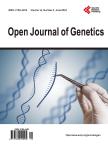Tay-Sachs carrier screening in the genomics age: Gene sequencing versus enzyme analysis in non-Jewish individuals
Tay-Sachs carrier screening in the genomics age: Gene sequencing versus enzyme analysis in non-Jewish individuals作者机构:Department of Genetics Quest Diagnsotics Nichols Institute San Juan Capistrano USA
出 版 物:《Open Journal of Genetics》 (遗传学期刊(英文))
年 卷 期:2013年第3卷第1期
页 面:61-66页
学科分类:1002[医学-临床医学] 100214[医学-肿瘤学] 10[医学]
主 题:Tay-Sachs Screening Gene Sequencing Hexosaminidase A
摘 要:Purpose: To compare the sensitivity of Hexosaminidase A (HexA) enzyme-based testing to gene sequencing for carrier detection in non-Jewish individuals. Methods: Blood samples were obtained from parents and relatives of affected patients at an annual Tay-Sachs and Allied Diseases Foundation meeting. A family history was taken for each individual. Samples were analyzed for leukocyte HexA activity, serum HexA activity and subjected to extensive gene sequencing. The results from these analyses were combined with our previously published data describing 34 obligate Tay-Sachs disease (TSD) carriers. Results: Twelve additional TSD carriers were detected in this study. Gene sequencing successfully identified all 12 carriers whereas enzyme analysis identified 11 of 12 carriers. This individual is a carrier of the B1 variant that is known to cause false negative results with enzyme testing. Combined data from 46 non-Jewish TSD carriers revealed that gene sequencing had a higher sensitivity rate than HexA enzyme-based testing (94% versus 87%) in non-Jewish TSD carriers. In our series, approximately 4% of non-Jewish TSD carriers have this mutation. Conclusions: HexA gene sequencing provides a higher sensitivity for TSD carrier detection than HexA based enzyme analysis in non-Jewish patients primarily due to the presence of individuals with the B1 variant.



